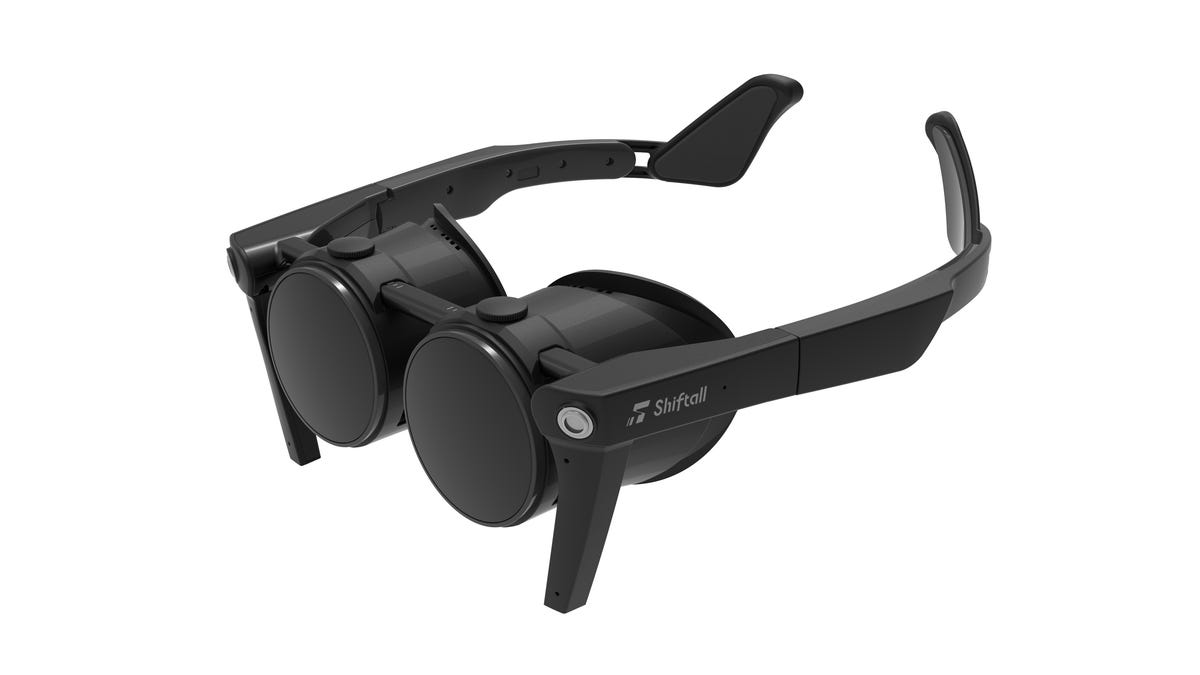Panasonic's tiny glasses-sized SteamVR goggles are coming this spring
They're a preview of the shrinking design of VR headsets. They also have an optional immersive heating-cooling chest strap.

These tiny VR goggles are SteamVR compatible.
The future of VR might be glasses-sized. Shiftall, a division of Panasonic, revealed a pair of compact goggles that use MicroOLED displays and seem a lot closer to smart glasses than the Oculus Quest 2. Oh, and there's also an optional temperature-altering accessory that creates immersive heating and cooling effects.
The MeganeX headset weighs 8.8 ounces, and has 120Hz MicroOLED displays with a resolution of 2,560x2,560 pixels per eye, also considerably higher than the Oculus Quest 2.
The goggles still need to be tethered with a cable to a PC -- they're not a standalone headset -- but they show, potentially, how much more compact VR goggles could be getting in the next year or so. HTC's Vive Flow, released last year, aimed for a similar super-compact design. Notably, neither seem to fit over normal glasses.
Panasonic demonstrated an earlier version of this headset two years ago at CES, but this version is actually being released this spring, for around $900. The headset has its own Qualcomm Snapdragon XR1 processor to enable tracking, and a more compact display with pancake lenses -- a similar type of tech is expected in Meta's next-gen VR headset, Project Cambria. Qualcomm has long hinted at more compact VR and AR headsets coming in the next year or two, leaning on the company's chips and technology.
Shiftall also sells other accessories that work with SteamVR and the headset, aiming for a total-body immersive experience. One, a leg and hip-connected set of trackers called HaritoraX, is coming to the US in the spring for $270 (and also works with the Oculus Quest 2, apparently). Another, the Pebble Feel, is a $200 Bluetooth-connected vest with a temperature-changing module on the back that gets hot and cold, sending temperature fluctuations that could sync with VR experiences. A $200 mouth-worn voice-suppressing microphone, Mutalk, is designed to prevent ambient environment noise from "leaking into the metaverse," or to muffle conversation in public places where you might be in VR, perhaps.

